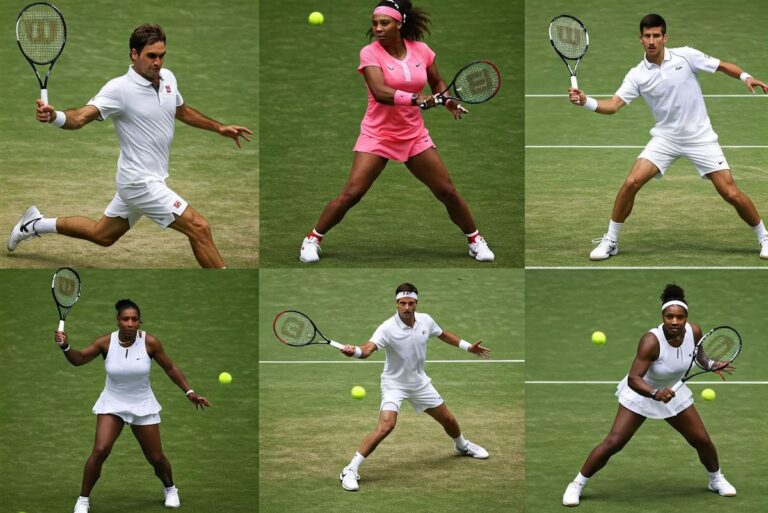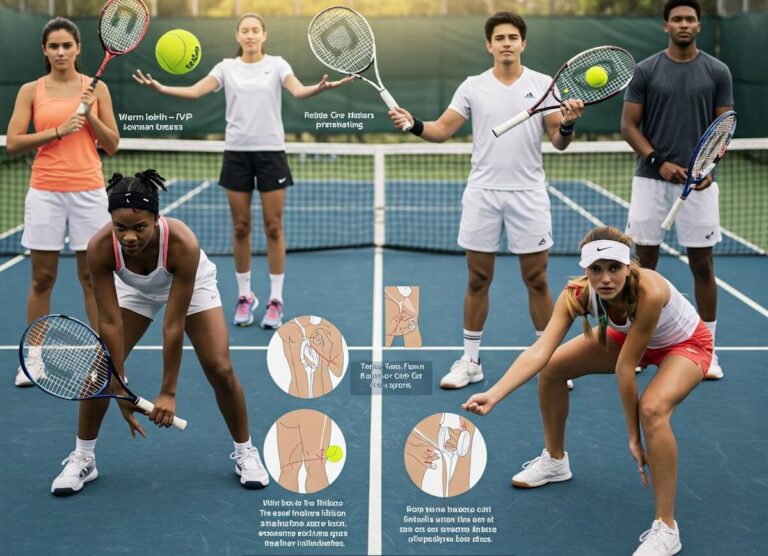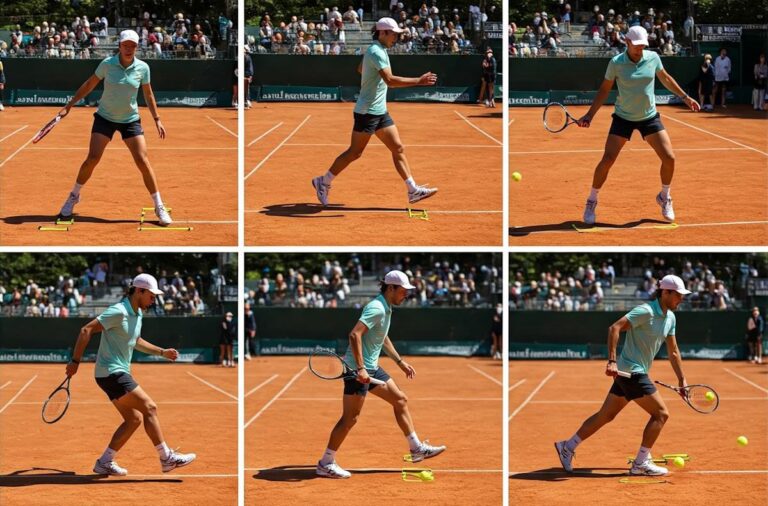Introduction to Tennis Training for Kids
Tennis training for kids serves as a crucial foundation in their pursuit of mastering this dynamic sport. Engaging young players in regular tennis activities not only enhances their physical fitness but also instills several valuable life skills. Through practice and competition, children discover the significance of discipline, teamwork, and resilience, which are vital attributes both on and off the court.
One of the key aspects of tennis training is its ability to improve overall athleticism. As children learn to coordinate their movements, develop agility, and increase their stamina, they lay the groundwork for long-term health benefits. Cardiovascular fitness is bolstered through running, while hand-eye coordination is sharpened as players strive to hit the ball effectively. These enhancements contribute to a more active lifestyle, promoting health habits that can last a lifetime.
Tennis also provides valuable opportunities for social interaction. As young athletes participate in group training sessions, they learn the importance of teamwork and communication. Collaborating with peers fosters friendships and enhances their ability to work together towards common goals. This bonding experience is instrumental in developing effective social skills, which can help them navigate various challenges in their everyday lives.
Moreover, the nature of the game teaches children resilience. Tennis is a sport that requires perseverance; players often face setbacks, whether it be a lost match or a missed shot. By overcoming these obstacles, young players cultivate a mindset geared towards improvement and personal growth. They learn to view challenges as opportunities, harnessing their determination to excel further.
In summary, tennis training for kids is vital not only for enhancing physical fitness but also for fostering essential life skills. By engaging in this sport, young players gain the tools necessary to navigate their athletic journey and everyday experiences with confidence and resilience.
Choosing the Right Equipment
When it comes to tennis training for kids, selecting the appropriate equipment is paramount. The right racquet, balls, and footwear can significantly enhance a child’s skill development and overall enjoyment of the game. A well-chosen racquet, tailored to a child’s age, height, and skill level, can make a substantial difference in their performance and confidence on the court.
The size and weight of the racquet are critical factors to consider. For younger or smaller children, a lightweight racquet with a shorter grip can promote better control and encourage them to swing more freely. Generally, a racquet length of 21-23 inches is recommended for children under 7 years old, while those aged 8-10 may benefit from a 23-25 inch racquet. As children grow and improve their skills, they can transition to adult-size racquets, usually starting around age 11.
Equally important is the selection of the tennis balls used during training. Low-compression balls are specifically designed for young players and beginner-level training, as they bounce lower and are slower, allowing for improved rally situations. These balls, often referred to as red, orange, or green dots, facilitate skill development while minimizing frustration for beginners. Choosing the right type of tennis ball aligns with a child’s playing level and ensures a positive learning environment.
Footwear also plays a critical role in a child’s ability to practice effectively. Opt for well-fitted tennis shoes that provide adequate support, cushioning, and traction on various court surfaces. Ensuring the shoes are comfortable will prevent injuries and give children the confidence to move freely during training sessions and matches. Overall, a thoughtful selection of equipment can create a supportive foundation for kids as they embark on their tennis journey.
Fundamental Skills in Tennis
Tennis is a sport that requires a blend of agility, coordination, and strategic thinking. For young players, mastering fundamental skills is essential not only for building a solid foundation but also for enhancing their confidence on the court. The primary skills every aspiring tennis player should focus on include proper grips, efficient footwork, and proficient stroke techniques.
Starting with grips, understanding the different types—such as the Eastern, Western, and Continental grips—is crucial. Each grip affects how the ball is hit and can influence the player’s gameplay. Parents and coaches should encourage kids to experiment with these grips during practice sessions, helping them discover which one feels most natural. This exploration can also enhance their ability to adapt to various playing styles in the future.
Footwork represents another fundamental skill that significantly impacts a player’s performance. Young athletes must learn to move swiftly and responsively, positioning themselves effectively for each shot. Practicing footwork drills can help children develop the necessary agility. For instance, simple exercises that involve lateral movements or quick sprints can improve their court coverage, ensuring they are always in the right place at the right time.
Stroke techniques, which encompass forehands, backhands, serves, and volleys, complete the foundational skill set. Coaches should break down each stroke into manageable steps, focusing on grip, stance, swing path, and follow-through. Incorporating fun drills and games can make learning these techniques enjoyable. Additionally, using video analysis can offer visual feedback, allowing players to see their progress and make necessary adjustments.
In conclusion, mastering these fundamental skills in tennis is integral to the development of young players. By focusing on grips, footwork, and stroke techniques, parents and coaches can foster both competence and confidence in their budding athletes, setting them on a path toward lifelong enjoyment of the sport.
Developing a Training Routine
Establishing a structured training routine is essential for young tennis players to cultivate their skills and build confidence on the court. A comprehensive training plan should incorporate an array of drills, conditioning exercises, and practice matches, focusing on various aspects of the game. By doing so, trainers and parents can create an engaging environment that fosters development and maintains motivation.
The first step in crafting an effective training routine is assessing the child’s current skill level and tennis experience. This approach allows for the formulation of a tailored schedule that suits their individual needs, ensuring the progression of their abilities. Incorporating various drills is vital to enhance particular skills, such as serving, volleying, and groundstrokes. Regular practice of these techniques will not only promote muscle memory but also improve overall performance during matches.
In parallel with technical skills, conditioning is a critical component of a well-rounded training schedule. Young athletes can benefit from working on their fitness through agility exercises, strength training, and flexibility routines. These conditioning components will bolster endurance and resilience, ultimately leading to improved performance on the court. A balanced training routine should also include rest periods to allow for recovery, as overtraining can lead to fatigue and injuries, particularly among youngsters.
Incorporating practice matches into the training schedule can provide essential real-game experiences that contribute to developing match strategies and mental toughness. This practice also reflects the importance of applying newly learned skills in a competitive setting, which enhances overall confidence. Trainers and parents should encourage a supportive atmosphere during these matches, underscoring the necessity of sportsmanship and resilience, regardless of the outcome.
In conclusion, a structured training routine that encompasses a variety of drills, conditioning, and practice matches is fundamental in the development of children’s tennis skills and self-confidence. By maintaining an engaging and effective training schedule, young athletes can progressively hone their abilities and enjoy the sport, fostering a lifelong love for tennis.
The Role of Coaches and Mentorship
Coaches play an instrumental role in the tennis development journey of young players. A good coach not only imparts technical skills but also fosters a supportive environment that encourages children to grow both on and off the court. Essential characteristics of effective coaches include patience, empathy, and the ability to communicate clearly. Coaches who are passionate about the sport and understand the nuances of child development can create a positive framework for learning, ensuring that training sessions remain engaging and productive.
Mentorship is a vital aspect of this developmental process, especially in shaping a child’s confidence. Coaches who act as mentors demonstrate a genuine interest in their players’ personal and athletic growth, building strong connections that often extend beyond the sport. They help athletes navigate the inevitable highs and lows of competition, providing guidance that helps them develop resilience. By instilling a growth mindset, coaches encourage kids to embrace challenges as opportunities to improve their skills, rather than as threats that may cause anxiety.
Positive reinforcement is another key element that enhances a child’s love for tennis. Coaches who acknowledge the small victories, whether it’s mastering a new serve or improving footwork, create a nurturing atmosphere that promotes enjoyment of the game. Celebrating these milestones helps young players associate tennis with positivity and fulfillment, which can be essential for their long-term engagement in the sport. Furthermore, fostering a sense of community among players can also contribute to their emotional attachment to tennis, as friendships built on the court often extend to life outside of it. Overall, the combination of effective coaching and mentorship is fundamental in shaping confident, skilled young athletes.
Incorporating Fun and Games in Training
One of the key elements in ensuring that young tennis players remain engaged in their training is the incorporation of fun and games into practice sessions. By integrating enjoyable drills, children are more likely to develop key tennis skills while also fostering a positive attitude toward the sport. Engaging kids through play not only enhances their physical abilities but also boosts their confidence and love for tennis.
To create a playful atmosphere, coaches can introduce various tennis-related games that focus on fundamental skills such as hand-eye coordination, footwork, and shot accuracy. For instance, a simple game of “Tennis Tag” can be incredibly effective. In this activity, players must move and dodge while attempting to hit a ball, enhancing their agility and strategic thinking. Additionally, using colorful cones and targets on the court can help children aim and improve their strokes while making the practice feel like a fun challenge.
Moreover, incorporating mini-tennis matches with modified rules can encourage a spirit of friendly competition. For example, ‘King of the Court’ can be played in which players take turns trying to win points, rotating positions based on their performance. This setup not only builds skills but also teaches children how to cope with both winning and losing gracefully. The essence of learning through play should not be underestimated; it allows children to absorb essential concepts while enjoying the experience.
Ultimately, the combination of skill development and fun will yield the best results in children’s tennis training. Coaches and parents should strive to create an environment where kids enjoy the learning process. When children associate tennis training with enjoyment, they are likely to remain dedicated, practicing more deliberately and confidently over time. Approaching training in a lighthearted manner will serve as a catalyst for their overall athletic growth.
Building Confidence Through Competition
Participation in competitions plays a significant role in a child’s development as an athlete, particularly in the sport of tennis. Engaging in friendly matches and local tournaments provides young players with invaluable experiences that help build their confidence and resilience. Such experiences not only enhance their technical skills on the court but also teach them essential life lessons about handling pressure and adversity.
When children compete, they are often faced with winning and losing scenarios. A supportive environment at home is crucial as it influences their perception of competition. Parents can encourage a healthy mindset by emphasizing the importance of effort and personal growth over mere results. This approach helps children understand that while winning is rewarding, the process of competing and improving is just as significant. Parents should celebrate their child’s achievements, regardless of the outcome, and reinforce the idea that every match is an opportunity for learning.
Moreover, it is important for parents to model positive behavior when it comes to sportsmanship. Displaying respect towards opponents and officials sets a powerful example for young athletes. Encouraging children to shake hands with their opponents after a match or to offer praise to others can cultivate a sense of camaraderie. Additionally, discussing feelings after a competition can help children process their emotions, ensuring they feel supported regardless of the match’s outcome.
Ultimately, involvement in tennis competitions can be a confidence-building catalyst for kids. Not only do they learn the technical aspects of the game, but they also cultivate resilience and a growth mindset. With healthy parental support and encouragement, young athletes can navigate the competitive landscape with a sense of positivity, fostering long-term enthusiasm for the sport.
Psychological Aspects of Tennis for Kids
The psychological components of tennis play a crucial role in a child’s development both on and off the court. Tennis is not just a physical game; it requires mental discipline, focus, and the ability to manage stress effectively. Kids participating in tennis must learn to maintain concentration during matches, especially in high-pressure situations where distractions abound. Developing a strong mental game is essential for enhancing their overall performance and enjoyment of the sport.
One key aspect of psychological training is teaching kids how to set achievable goals. By establishing realistic targets, young players can track their progress and celebrate their accomplishments, leading to a boost in confidence. This increased self-esteem can translate to better performance, as athletes who believe in their abilities are more likely to take calculated risks and remain focused during critical moments in matches.
Stress management is another vital component of a child’s tennis experience. Children should be encouraged to explore relaxation techniques, such as deep breathing or visualization exercises, to help alleviate pre-match anxiety. These practices empower young athletes to center themselves and maintain composure when faced with challenging scenarios, such as competing against a highly skilled opponent or performing in front of a crowd.
Furthermore, teaching kids how to deal with pressure can significantly improve their resilience. Engaging in mock matches where they simulate high-stakes situations can help them prepare for real competition. This way, they can learn to process their feelings and find constructive ways to cope with the inherent stress of the sport.
In conclusion, integrating psychological strategies alongside technical training is critical for nurturing well-rounded young tennis players. By fostering resilience, focus, and effective stress management, children can not only enhance their performance on the court but also develop valuable life skills that extend beyond the game.
Long-Term Development and Future Opportunities
Tennis training for kids extends far beyond the mere acquisition of skills; it lays the foundation for long-term development in both sport and life. The initial stages of learning the game can foster critical skills such as discipline, focus, and resilience. As children progress in their training, they not only refine their tennis techniques but also cultivate important life skills that will serve them well in various aspects of their future. These attributes become invaluable as they pursue potential pathways to junior competitions, scholarships, and even professional tennis careers.
Junior competitions present an excellent opportunity for young athletes to put their training into practice. Engaging in competitive play can help children understand the dynamics of the sport, develop strategic thinking, and learn how to manage both victory and defeat. Participation in these events can also draw the attention of coaches and scouts, potentially opening doors to athletic scholarships that provide financial support for education while also allowing them to continue pursuing their passion for tennis. Such opportunities can enhance not only the financial aspect of education but also enrich the overall experience by enabling young athletes to compete at higher levels.
It is essential to emphasize the significance of patience and consistent effort throughout this journey. Developing proficiency in tennis is not an overnight endeavor; it requires time, dedication, and an unwavering commitment to improvement. Coaches and parents play a pivotal role in nurturing a child’s love for the game, ensuring they remain motivated and engaged throughout their training. Creating an environment that values both achievement and enjoyment will encourage young players to develop a lifelong affinity for tennis, ultimately helping them realize their full potential.



